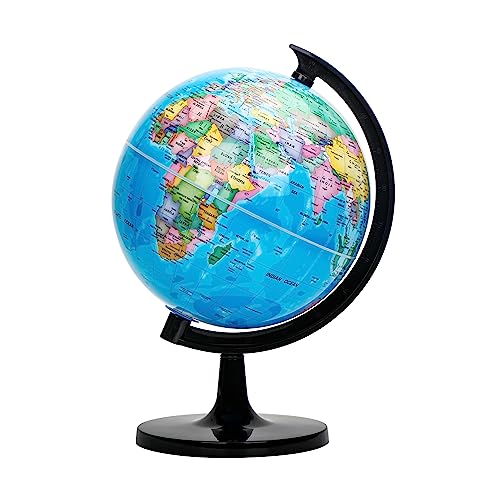Terrestrial Globes and Navigation: Exploring Their Uses and Limitations
Terrestrial globes have been used for centuries to aid in navigation and understanding the world. These spherical models of the Earth provide a three-dimensional representation of the planet, allowing users to visualize its topography, learn about its landmasses and bodies of water, and even measure distances between different locations. However, while terrestrial globes can provide valuable information, they have certain limitations when it comes to practical navigation. In this article, we explore the uses of terrestrial globes in navigation and discuss their limitations in modern times.
Historical Use of Terrestrial Globes in Navigation
Throughout history, terrestrial globes have been valuable tools for navigators and explorers. Before the age of satellite navigation and GPS, seafarers and travelers relied on maps and globes to chart their courses and understand the world. Terrestrial globes provided a comprehensive view of the Earth, allowing sailors to identify the continents, oceans, and major landmarks. They were particularly useful in visualizing trade routes and planning expeditions.
For example, during the Age of Exploration, explorers like Christopher Columbus and Ferdinand Magellan used terrestrial globes to plan their voyages and navigate through uncharted waters. These globes helped them understand the relationship between different continents and oceans, enabling them to plot their courses and estimate the distances they needed to travel.
Educational Value of Terrestrial Globes for Navigation
Terrestrial globes continue to be valuable educational tools in teaching navigation concepts to students and enthusiasts. They provide a hands-on and visual representation of the Earth, allowing learners to better understand concepts like latitude, longitude, and the relationship between different geographical features.
By spinning a terrestrial globe and observing the way lines of latitude and longitude intersect, students can grasp the concept of coordinates and how they are used to locate places on the Earth’s surface. Globes also provide a tactile experience that enhances the learning process, allowing individuals to physically rotate and interact with the Earth’s representation.
Limitations of Terrestrial Globes in Modern Navigation
While terrestrial globes have their place in education and historical context, their utility in modern navigation is limited. With the advent of advanced technology like satellite navigation, terrestrial globes have been largely replaced as practical navigation tools.
One of the key limitations of terrestrial globes is their static nature. Globes provide a fixed representation of the Earth’s surface, which means they cannot account for real-time changes such as road constructions, new infrastructure, or changes in coastlines due to natural processes. Maps and navigation apps, on the other hand, can be updated regularly to reflect these changes.
Additionally, terrestrial globes do not provide real-time information on traffic conditions, weather patterns, or other factors that can impact navigation. GPS-enabled devices and navigation apps, on the contrary, can provide live updates and suggest alternate routes based on current conditions.
Using Terrestrial Globes as Decorative and Historical Pieces
Despite their limitations in practical navigation, terrestrial globes continue to serve a purpose as decorative and historical pieces. Many people purchase globes as decorative items for their homes or offices, appreciating the aesthetic appeal and the sense of curiosity they evoke. Antique globes, in particular, hold historical significance and can be valuable collector’s items.
Terrestrial globes also have cultural and educational significance. They can be used in museums, libraries, and classrooms to showcase the history of navigation and help visitors understand the evolution of cartography. These globes can tell stories of exploration, scientific advancements, and the changing understanding of the world throughout different time periods.
Conclusion: The Role of Terrestrial Globes in Navigation
Terrestrial globes have been and continue to be valuable tools in navigation and education. While their practical use in modern navigation may be limited due to technological advancements, they have a rich historical and educational significance. They played a crucial role in the exploration of the world and continue to captivate the imagination as decorative and historical pieces. So while terrestrial globes may not be the go-to navigation tool of choice today, they still offer a unique and valuable perspective on our planet.






